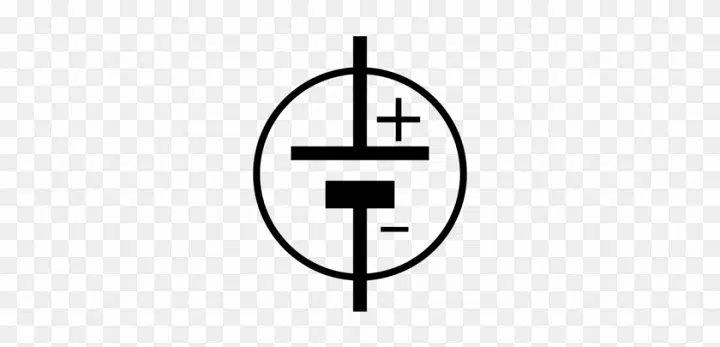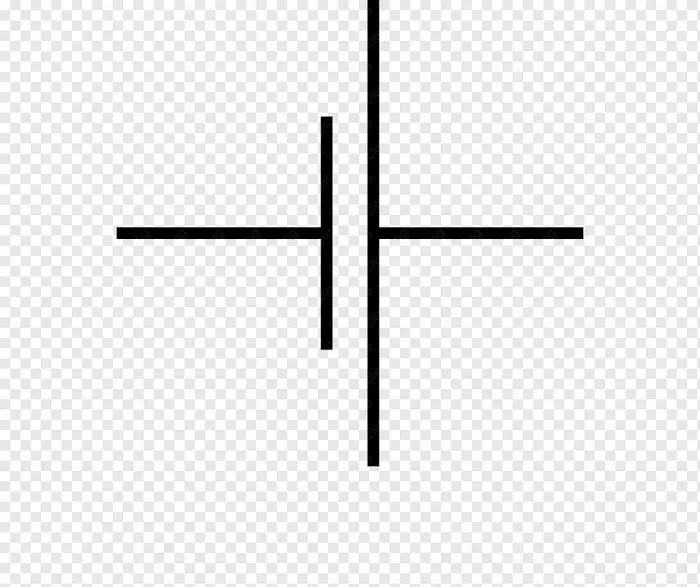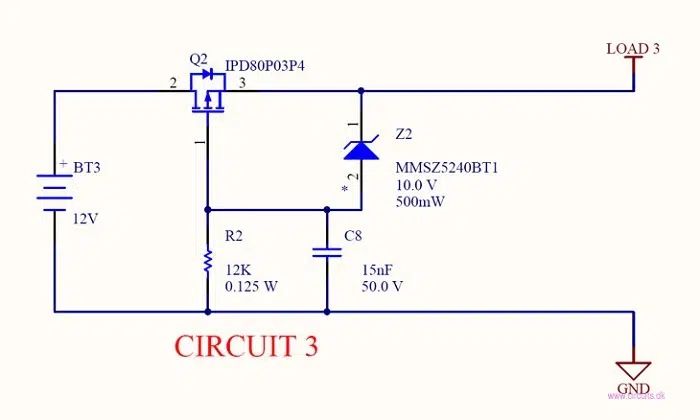Electrical circuits are the backbone of modern life. In all of the circuit diagrams, symbols are utilized to indicate various electrical devices. One of the most common and significant among all of them is the battery symbol.
The battery forms the center of electrical energy in most small, portable circuits. The battery symbol on a circuit diagram tells us the source of electrical energy and how it is connected with other devices. This symbol is of gigantic significance to all individuals learning electronics, physics, or electrical engineering.
This article explains what a battery symbol is, its appearance, its purpose, its structure, and its action in a circuit.
What Is a Battery Symbol
A battery symbol is a simplified drawing that circuit diagrams use to represent a battery or a direct current (DC) voltage supply.
In schematic diagrams of electricity, all the devices are drawn and not a detailed description. This makes diagrams simple and compact.
The battery is indicated by two or more parallel lines of different lengths.
- The longer line is used to indicate the positive terminal (+).
- The shorter is used for the negative terminal (−).
Simple Battery Symbol:
|‾| → Positive terminal (the longer one)
|_| → Negative terminal (the shorter one)
It indicates the flow direction of electricity from positive to negative terminals.
Role of the Battery Symbol in Circuits
The main purpose of the battery symbol is to show where the power is being supplied to the circuit. It also helps to:
- Identify the polarity (positive and negative)
- Identify the type of current used (DC)
- Show how the batteries are connected together (parallel or series)
- Provide the circuit readability and simplicity
There could be no reading of an electrical diagram without the battery symbol because it would lack power supply.
How the Battery Functions in a Circuit
A battery is an apparatus that transforms chemical energy into electrical energy. Chemical reactions occur in a battery in the two electrodes and electrolyte solution. One electrode is positive and the other is negative plates). These reactions create a difference in electric potential (voltage) between the two terminals.
When the circuit is created, electrons flow from the negative terminal to the positive terminal. It happens through wires and devices. The flow of electrons is called electric current.
Current is drawn on a circuit diagram from the positive terminal to the negative terminal, or conventional current flow.
Battery Symbol Components
The battery symbol is straightforward but each part has significance:
| Component | Description |
| Long line | Positive terminal (+) |
| Short line | Negative terminal (−) |
| Few pairs of lines | Represent a few cells together |
| Labels | Show voltage (for example, 1.5V, 9V, 12V, etc.) |
- A single cell battery has only one pair of lines (long and short).
- Multi-cell batteries have a few pairs together.
Example:
- Single cell: |‾|
- Two-cell battery: |‾||‾|
- Three-cell battery: |‾||‾||‾|_
Different Types of Battery Symbols
There are different types of battery symbols depending on the purpose of use of the circuit and drawing style.
- Single Cell Battery Symbol
- Represents a single 1.5V cell such as an AA battery.
- Applied in low voltage circuits or school projects or torches.
- Multi-Cell Battery Symbol
- Applied to represent two or more cells in series.
- Applied in higher voltage circuits (9V or 12V).
- Generic Battery Symbol
- Applied when no specific number of cells or voltage must be shown.
- Applied in general circuit diagrams.
- Rechargeable Battery Symbol
- Dotted with a charge symbol or an arrow near the symbol.
- Used in charging circuits such as phones or UPS.
- Battery Pack Symbol
- Symbolic indication of several batteries in series to get high energy consumption such as motor vehicles or solar panels.
Battery Symbol Representation According to Different Standards
Fundamental difference in battery symbol representation according to international standards used in circuit diagrams.
| Organization | Symbol Type / Common Use |
| IEC | Standard battery symbol with equal spacing – International standard |
| ANSI | Same design but may show terminals – Most common in North America |
| IEEE | May put voltage mark below symbol – Used in industrial and academic diagrams |
It’s the same thing essentially with these minor differences:
- Long line = positive terminal
- Short line = negative terminal
How to Draw a Battery Symbol in a Circuit
A battery symbol is easy to draw. You can draw it by hand or by computer-aided design.
How to Draw Manually
- Draw a vertical long line (positive terminal).
- Draw a shorter line beside it (negative terminal).
- Leave small space between them to represent separation.
- If more than one cell, continue the pattern: long-short-long-short.
- Add labels like + and − for convenience.
Steps to Draw Using Computer Software (like MS Word or PowerPoint):
- Go to Insert → Shapes → Lines.
- Draw alternating short and long lines.
- Label the terminals + and −.
- For circuit drawing programs like Proteus, Multisim, or Tinkercad, find the battery symbol under Power Source and place it in your circuit.
How Battery Is Powered in a Circuit
There are two principal ways batteries are powered: series or parallel.
Series Connection
- Both positive terminal and negative terminal are connected.
- Sum of total voltage.
- Used where extra voltage is needed.
- Example: Two 1.5V cells → sum total of 3V.
- Symbolically: |‾||‾||
Parallel Connection
- Positive terminals are connected together, and negative terminals are connected together.
- Voltage is the same but capacity is doubled.
- Used wherever additional battery life is needed.
Symbolically:
- |‾| +
|_| - |‾| +
|_|
Battery in Circuit Diagrams: Examples
A few examples of use of the battery symbol in basic circuit diagrams are as given below.
- Battery and Bulb Circuit
- The battery symbol is connected to a light bulb with wires.
- The bulb glows when the circuit is connected.
- Battery with Switch and Resistor
- The battery supplies power, the switch controls current, and the resistor limits the current.
- Battery and Motor Circuit
- Used in small toys or fans.
- The switch is closed for battery and motor connection through wires.
There is the battery symbol in the start in these circuits since it is used for power supply.
Common Voltages of Batteries
Different devices need different voltages. Voltage rating can be specified using the battery symbol.
| Battery Type | Voltage | Common Use |
| AA/AAA Cell | 1.5V | Remote controls, clocks |
| 9V Battery | 9V | Toys, multimeters |
| Car Battery | 12V | Vehicles, UPS |
| Laptop Battery | 11.1V – 14.8V | Laptops |
| Mobile Battery | 3.7V | Smartphones |
While designing a circuit, always select the appropriate voltage for your devices. So that they are not damaged.
Battery Polarity in Circuits
Polarity is the direction of electric current flow. A battery contains two poles:
- Positive terminal (+) – denoted by the long line.
- Negative terminal (−) – denoted by the short line.
Placing the battery in the reverse direction would cause the circuit to fail or damage sensitive equipment.
Always join the positive terminal to positive terminal of the circuit and negative to ground wire or negative wire.
Also Read: Divide Symbol on Keyboard: What Does it Say, How to Perform It, and How to Type It Easy
Real-Life Application of Battery Symbol
The battery symbol is not just explained to students but also to technicians and engineers. It helps in:
- Electronic schematics reading and understanding.
- Circuits designed properly.
- Making safe connections properly when working with actual batteries.
- Equipment repairing and maintenance properly.
- Power flow understanding in renewable equipment like solar and electric vehicles.
Battery Symbol in School
School students in laboratories discover the battery symbol when drawing electric circuits in experiments like joining bulbs, resistors, or ammeters. Visualization is a foundation for later learning actual electronics.
Mnemonics for Recalling the Battery Symbol
- Long line = Positive
- Short line = Negative
- Repeated lines = More than one cell
- Use + and − in diagrams at all times
Use of Battery Symbol in Actual Circuits
- Household Appliances: Flashlights, radios, toys
- Portable Electronics: Phones, computers, cameras
- Automobiles: Car starting systems
- Solar Systems: Energy storage and backup
- Medical Devices: Pacemakers, hearing aids
All of them utilize battery circuits. The symbol makes the identification and diagramming of their electrical systems easier.
The battery symbol is the simplest yet most crucial symbol utilized in circuit diagrams. It is employed to denote the power source that activates the whole circuit. It lets one recognize where electricity comes from and the direction it comes from.
It appears in the shape of alternating long and short lines, with the long line representing the positive terminal and the short one negative. Whether from a simple school circuit to a complex engineering schematic, the battery symbol remains the same universal symbol for energy and life in electronics.



